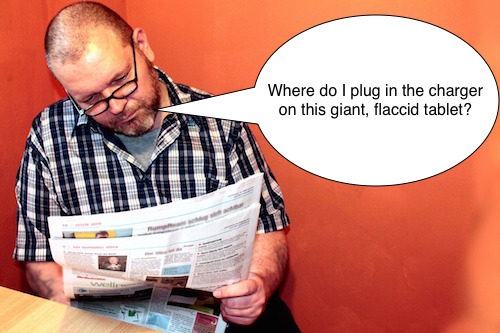Are you feeling frustrated by another 5-paragraph essay assignment? Do you feel as though your creative freedom has been stymied once again by the powers that be?
Do you want to be free to explore essay organization like the effervescent honey blossom butterfly that you are?
Well, you must break free from the 5-paragraph essay shackles that bind you! Stand up and say, “No! I will not go gentle into that boring essay night!”
ARE YOU WITH ME?!?
No? Too dramatic?
Oh. Well. Are you feeling bored and unstimulated when it comes to 5-paragraph essays?
Yes!
Well, okay then! You’ve come to the right place, soldier! Let’s learn how to break out of the 5-paragraph essay structure.
What Is a 5-Paragraph Essay?
Sun Tzu wrote in The Art of War that it is important to “know thy enemy.”
And since I’m sure the Chinese militant from 500 BC had writers like us in mind when he uttered those words, we shall begin our quest by getting to know our enemy: the 5-paragraph essay.
The 5-paragraph essay structure is a clear and simple way to effectively tackle just about any essay assignment. It is made of five paragraphs, of course.
These five paragraphs are broken down into an introduction, three body paragraphs, and a conclusion:
- Introduction: The first paragraph introduces your topic with a hook and includes a thesis statement that outlines the three arguments that you will support and expound upon later.
- 3 Body paragraphs: Each body paragraph focuses on one of your three arguments. Each is accompanied by the supporting facts or quotes that you have gathered to prove said argument.
- Conclusion: The final paragraph in your 5-paragraph essay is dedicated to restating your thesis statement and elucidating your overall message.
So, there you have it. Clear. Simple. Effective. Done. Close your computer, turn on your Xbox.
The problem is that easier isn’t always better, especially when it comes to writing.
Is the 5-Paragraph Essay Enough?
Why try to teach an old dog new tricks or mess with a good thing or fix something that ain’t broken, you ask?
Well, let’s take our breakdown of the 5-paragraph essay structure a step further, which most of you will be asked to do. You can quickly see that although simple is a good description, not many people have ever described it as creative or expansive.
- Introduction:
- Hook (1-3 sentences)
- Thesis (1-2 sentences)
- Argument One:
- Topic sentence (1 sentence)
- Support one (1-2 sentences)
- Support two (1-2 sentences)
- Support three (1-2 sentences)
- Argument Two:
- Topic sentence: (1 sentence)
- Support one (1-2 sentences)
- Support two (1-2 sen
Seriously, I can’t even finishing writing that, it is so boring. It looks more like a recipe than the outline of a significant piece of writing. And herein lies the problem with 5-paragraph essays: they don’t push you as a writer or a learner.
And, if you aren’t being pushed to learn, what’s the point in any of it?
Alright, let me be fair. I’ve been a teacher for several years now, and I have taught the 5-paragraph essay, so perhaps I’m being hypocritical. It isn’t worthless. It was designed for a reason.
The 5-paragraph essay allows students who are just learning the ins and outs of writing an academic essay to understand the basic elements that are needed to create an effective paper.
However, once you’ve learned those basic elements, which I’m guessing many of you, my readers, have, then it is simply too simple. There are so many creative and thought-provoking ways to tackle your next essay, why settle for less than your best?
And the truth is, if you are a college student who already understands the basic elements of a strong essay, then the 5-paragraph structure is no longer enough. College professors won’t settle for a basic, repetitive, regurgitation of facts.
Instead, they will be looking at your opinion, how you analyze those facts, whether or not you can convince them to care. So, how can you learn to do this in your own writing?
How Can You Break Away from the 5-Paragraph Essay Structure?
Well, at this point, you may be wondering, if not the 5-paragraph essay, what?
This is where writing gets fun!
You don’t need to be spoon-fed an alternative structure, because you will just end up falling into the same dull routine that leads to the same educational dead-end.
Instead, you must see each new essay as an opportunity to explore the best way to write about a subject.
Students tend to fall into a dangerous mindset after being taught the 5-paragraph essay structure. Instead of thinking about how to structure an essay to fit their ideas and explorations, they begin thinking about how to manipulate what they have learned to fit a certain structure.
E.M. Forster once said about writing, “How can I know what I think until I see what I say?”
The same can be said for essay structures.How can I know how best to structure my persuasive essay until I see what I want to argue?
More important than nailing down a specific structure is to learn the important elements of a persuasive essay and how to apply them in your writing in an effective way.
“How?” you ask. Here let me give you an example.
5 Questions to Ask Yourself When Evaluating the Elements of an Essay
You can start learning how to do this by reading. The essays you are churning out in English class do have some real world connections, you know? One of the most classic examples is the newspaper editorial. That’s right, like in a newspaper, remember those?
If anything without an electric current gives you hives, then check out the great online editorials from The New York Times. In them you will find an opinion that is argued and explained in a way that is relevant to the reader. However, you will be hard pressed to find a cookie cutter structure.
Moreover, editorials, much like your high school and college essays, have a strict word limit, so they can be great examples of how to make a clear and convincing argument in a short space.
While reading the editorials, you should ask yourself the questions below. Let’s give it a shot by answering these questions in relation to this editorial titled “New York City’s Libraries Need Money.”
![]() 1. What is the issue/argument?
1. What is the issue/argument?
- The writer gets straight to the point, making the issue clear from the title: the libraries in New York City need money. As we begin reading, the essay quickly and clearly argues for giving the libraries the money.
- Introduction: The writer describes the libraries as “old, crowded, falling apart or lacking in things they need to be useful in the 21st century.”
- Thesis: Following this introduction, a stand alone sentence declares that the Mayor “should give them the money, no question.”
- Body: The thesis is now defended in the subsequent paragraphs in three arguments: libraries have been underfunded for years, libraries are where underprivileged people learn, and the mayor should take care of the little people as he does the big businesses.
- Conclusion: The essay is then finished with a short conclusion containing an interesting fact about the amount of people who visit libraries each year.
![]() 3. Where does the evidence come from?
3. Where does the evidence come from?
- The writer links to a couple of New York Time’s articles to back up certain facts.
![]() 4. Are you left asking questions, feeling unsatisfied?
4. Are you left asking questions, feeling unsatisfied?
- I’m left wondering who is against giving money to the libraries, and why? I want to hear the other side of the story.
- This editorial takes a strong, emotional stance. It is hard not to be convinced. However, I couldn’t be completely on board with their argument until I knew the other side of the story.
By taking the time to think about these elements, we can see what works and doesn’t work in this essay. We also notice that it has many of the same elements as a five-paragraph essay without the albatross of its structure.
When you ask these questions while reading others’ work, you develop an ability to see these same things in your own writing. After a while, you won’t need some generic essay structure to develop your ideas; they will flow naturally. And when they don’t from time to time, you’ll be able to recognize the reasons and remedy it.
Check out this video from Andrew Rosenthal, the editorial page editor from The New York Times.
He lists seven important pointers for writing an editorial, all of which apply to your persuasive essay. They are:
- Know your bottom line
- Be concise
- Give an opinion or solution
- Do your research
- Write clearly
- Every writer needs an editor
- Be prepared for a reaction
Beyond reading editorials, I encourage you to check out the example persuasive and argumentative essays at Kibin.com.
Not all of the essays you find there will be grade “A” essays, and that’s the point. When you finish reading an essay, think about how you feel and ask yourself the same questions that I listed above.
Just like a creative writer must read a lot to develop an understanding of what works and what doesn’t, you must do the same when it comes to your essay writing. Once you do, you will find it much easier to critique and revise your own writing.
What to Remember as You Remove the Training Wheels
First and foremost, all of that time that you spent writing 5-paragraph essays wasn’t a waste. You learned valuable tools, like developing a clear argument and backing up your ideas with research, while mastering the basic elements of structure.
Much like training wheels on a bike, this time was well-utilized. However, there comes a point when you outgrow them.
As you move forward, remember having a defined structure before writing isn’t always the way to go. Instead, keep in mind that a string of connected ideas is what holds your essay together. As long as they are connected throughout, your essay will be engaging and worthwhile for the reader.
After reading all of those editorials and argumentative essay examples, I’m sure you’ve noticed a few keys to a strong persuasive essay. You must:
- Have a clear opinion and take a side. If you don’t form an opinion and take a side, your essay will have no point.
- Be able to back up that opinion with research. This could include facts and figures as well as quotes from experts. But, they better be appropriate, accurate, and cited correctly.
- Get to the point. Don’t waste time with broad strokes. Be concise and get to your opinion and/or solution quickly in your paper.
- Make sure your ideas are well-connected. Less important than a cookie cutter structure is keeping your ideas flowing from one to another. Let the subject matter and your ideas dictate your organization. Check out this handout from UNC on how to rethink the organization of your essay.
Also, remember that writing is a collaborative process. Bounce your ideas and opinions off of friends and family when you get a chance. See their reactions. Their responses won’t necessarily change your opinions, but they might influence the way in which you present your arguments.
Moreover, as Mr. Rosenthal from The New York Times suggests in his video, every writer needs an editor. Take the time to hand your essay over to an experienced editor to give you an honest appraisal of the effectiveness of your argument.
Last, but not least, enjoy the process. Your reader isn’t the only person who should learn from the essay.
Happy writing!


